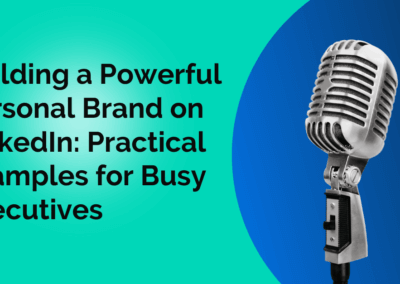We all know that every company wants to grow sales numbers–that’s the name of the game. But the only thing worse than not growing sales numbers is having no idea when sales will grow, or even if sales can grow.
For a long time, many people believed that to increase sales, all you need is more salespeople. However, things have changed in recent years, and new technologies and strategies now hold the key to growth–predictable growth. That’s right, it’s now possible to accurately predict when your sales will grow–and, if your sales aren’t growing, it’s now easier to diagnose the problem more systematically.
Step 1: Optimize Your Sales Funnel
So how can a company incorporate a system that facilitates predictable growth into its’ organization? Well, the first step is to have a clearly defined sales funnel that Management, Marketing, and Sales all take to heart. Without a company-wide consensus on which leads fall into which segments of the sales funnel, sales growth will either come sporadically, or not at all.
As a quick review, the sales funnel is broken up into the following segments:
- Top of the Funnel. This first segment contains your newest prospects and website visitors, the people who may know about your company or who are simply looking for insights into challenges they may be facing. This is Marketing’s domain. Here, the focus should be on increasing overall traffic to your website through strategies such as Search Engine Optimization, creating a wealth of remarkable content, and engaging with prospects via social media outlets. This is the high level interaction with potential buyers, where you can gauge whether or not they are likely to continue moving through the funnel.
- Middle of the Funnel. This segment is home to Marketing Qualified Leads (MQLs). These are prospects who have made a significant number of actions on your website, whether it be a certain number of pages visited, blogs viewed, or content downloads (these criteria should be determined in your company’s Service Level Agreement). Marketing is also responsible here, but can be greatly helped with insights from Sales. Here, the focus should be on lead conversion.
- Bottom of the Funnel. In this final segment, leads are converted to opportunities and eventually to Sales Qualified (SQLs). This is the hand-off between Marketing and Sales, and when your Sales team knows a lead is ready to talk with their team. These are leads who have spent some quality time on your website and have shown interest in your products or services, whether by requesting a product demo, reading case studies, or reaching out to your Sales team themselves. Here, the focus is on closing these SQLs to customers.
With a clearly defined sales funnel, and with knowing which leads are in which segments, your company can implement clear targets for each metric: visitors, lead conversions, and both Marketing and Sales quotas. Though these targets may be difficult to set initially, keeping a track record of your targets (and whether or not you hit them) over time will make setting these targets easier and more systematic.
After setting these targets, it is absolutely essential to pay close attention to the progress each member of your Marketing and Sales teams make. Of course, you should also monitor how your company is progressing toward these targets. By tying bonuses for both Sales and Marketing to these metrics, members of both teams will be inherently motivated toward reaching these goals, which will result in systematic and predictable growth.
What To Do If You’re Not Hitting Your Targets
But what if your not hitting these targets? Well, that’s the beauty of a clearly defined sales funnel–you can pinpoint where your problems are.
For example, perhaps your company missed its’ target for new website visitors. This means that the problem lies at the Top of the Funnel. Maybe you don’t have enough attractive content or maybe your website isn’t fully optimized. If this is where the problem lies, maintaining and scaling growth will be difficult, because you don’t have any visitors to convert to leads, or close into customers.
To fix this, focus on your Top of the Funnel content–not only in creating more, but in distributing it, and distributing it through the right channels. Encourage your employees to share it over social media. You can also revisit your SEO plan, or consider pay-per-click ads.
If, however, you’re not hitting your lead conversion target, then the problem lies at the Middle of the Funnel. This means that despite all of your Marketing team’s best efforts, leads aren’t motivated enough to take action. This, in turn, puts too much pressure on your Sales team, as it may require them to do their own prospecting or cold calling.
However, by reviewing your Buyer Personas, and mapping the content you have for each phase of the Buyer’s Journey, you can identify where you are lacking. Maybe you need more Consideration Stage content like white papers, or Decision Stage content like a trial download or video demo, in order to help nurture leads through the funnel. Or maybe your website or landing pages aren’t fully optimized with enticing calls-to-action.
Lastly, if you’re not hitting your sales quotas or revenue goals, the problem is at the Bottom of the Funnel. Not hitting this target will obviously spell trouble for growing your sales. This may be due to poor lead management or just low-quality leads. In the case of this event, you should assess your leads’ quality, and make sure that only the most qualified leads are being passed on to Sales. Also, implement a Sales Development process that will allow the members of your Sales team to keep organized when following up with leads. It’s crucial to keep leads engaged–they may not be thinking about you, even if you think they are.
It’s important to note that implementing these targets and these strategies won’t always lead to change overnight. However, in the long run, they will result in long-term, predictable growth. If you find yourself missing multiple targets at once, start making changes at the top of the funnel, so that the effects can trickle down and have long lasting effects.
By monitoring each segment of the sales funnel, and by aligning the efforts of your Marketing and Sales teams, predictable growth is always in reach.
{{cta(‘57341862-17d3-4fcf-aa1c-b1baef929b4a’)}}



